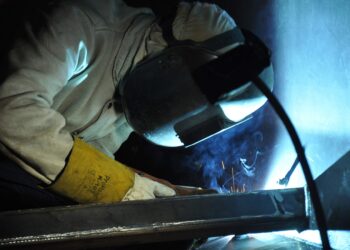Albania’s landscape is dotted with a unique and ubiquitous feature: thousands of concrete bunkers, originally built as military defences during the Cold War era. These bunkers, once symbols of isolation and fear, are now undergoing a remarkable transformation, emerging as cultural icons and symbols of Albania’s complex history.
Constructed under the regime of communist dictator Enver Hoxha, these bunkers were part of a vast network designed to protect Albania from potential invasions. Estimates suggest that over 170,000 bunkers were built across the country, a manifestation of Hoxha’s paranoia and the government’s extensive military expenditure. For decades, these bunkers have been a pervasive reminder of Albania’s isolationist past.
In recent years, however, there has been a shift in the perception and utilisation of these once-feared structures. No longer seen merely as relics of a bygone era, the bunkers are being creatively repurposed and integrated into Albanian society in various ways.
One of the most notable transformations is their conversion into cultural and artistic spaces. In the capital city of Tirana and beyond, some bunkers have been turned into galleries, museums, and exhibition spaces. For example, one of the largest bunkers in the city, Bunk’Art, has been transformed into a museum and cultural space, offering insights into Albania’s communist history and contemporary art exhibitions.
These structures are also being used for more commercial purposes. Some bunkers have been converted into unique cafés, restaurants, and even guesthouses, offering visitors a distinctive experience. This repurposing not only provides economic opportunities but also contributes to the country’s growing tourism industry.
In addition to their cultural and commercial renaissance, the bunkers are also becoming symbols of Albania’s artistic expression. Street artists and muralists have used the bunker’s concrete canvases to create striking artworks, reflecting on Albania’s history and the country’s journey towards democracy and integration with Europe.
Moreover, the bunkers are increasingly being incorporated into public and social initiatives. Some are used as community centres or venues for educational programmes, playing a role in community development and public engagement.
Despite these positive developments, the sheer number of bunkers poses a challenge. Many still lie abandoned, particularly in rural and remote areas. The Albanian government and various organisations are exploring sustainable ways to manage these structures, considering factors like environmental impact and historical preservation.
The transformation of Albania’s bunkers from military relics to cultural icons is symbolic of the country’s broader journey from isolation to openness. These structures, once a testament to a closed society, are now part of Albania’s cultural narrative, telling a story of resilience, creativity, and reinvention. As Albania continues to integrate with the broader European community, the bunkers stand as unique landmarks, embodying the country’s complex history and its aspirations for the future.






